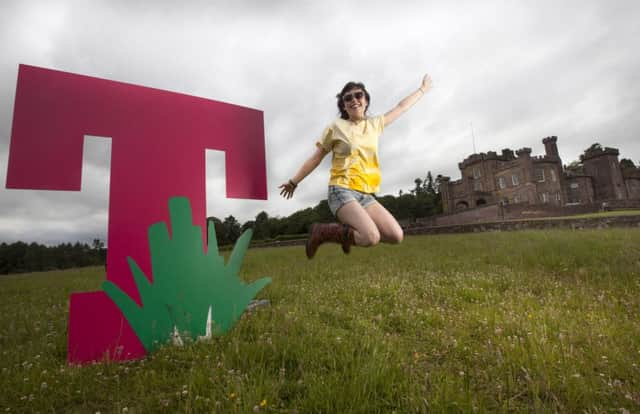T in the Park’s otter den blockage ‘broke the law’


A report by T in the Park’s own environment consultants reveals that they were aware of the possible otter holt on the site and monitored it for eight days.
Experts employed by DF Concerts, the firm behind the festival, concluded the hole was not being used by otters and bricked it up.
Advertisement
Hide AdAdvertisement
Hide AdBut one of the UK’s leading otter experts said last night that their actions may have broken strict laws protecting otters and they could face up to a £6,000 fine.
Dr Paul Yoxon, Head of Operations at the International Otter Survival Fund, said they should have monitored the site for a longer period using cameras.
DF Concerts, already reeling from days of controversy about potential harm to ospreys on the site, last night flatly denied it had broken the law.
The firm faces a tight deadline to get permission from the local council to use the grounds of Strathallan Castle, Perthshire, after having to relocate from the former site in Balado.
The Environmental Statement report from DF Concerts says a possible otter holt was monitored for eight days using a pad inside the cavity and sticks across the entrance.
After “no signs” of mammal use were recorded “the hole was blocked with stones and bricks”.
Dr Yoxon, speaking about the monitoring process, said that in his opinion it was “quite unprofessional”.
Advertisement
Hide AdAdvertisement
Hide AdHe added: “Most people would monitor it with a camera trap using an infrared camera. Eight days isn’t long enough at all. You probably need a month. It could be using a holt in another area and eventually come back.”
Mr Yoxon, an award-winning conservationist based on Skye, continued: “I’ve no idea why they blocked it up with rocks.”
He said that, in his opinion, “it was illegal to do this”.
“It should never have happened,” he said. “It’s an offence to kill an otter - an offence to damage its home.”
Asked what the punishment could be he said: “Up to a £6,000 fine and three months prisons sentence.”
DF Concerts’ ecologist also looked into the possibility of bats, red squirrels and badgers living on the proposed festival site.
They found a badger sett but again concluded that it was not occupied.
The experts identified 14 potential red squirrel dreys. They concluded in “many” cases they were collapsed structures or old buzzard nest. Six appeared to be dreys but there were no signs of use.
Advertisement
Hide AdAdvertisement
Hide AdThe report added: “A red squirrel was seen approximately 20 metres from drey 15 but was not seen using it.”
The consultants found evidence of bats in the area and will “monitor” the creatures in the run-up to the festival.
Simon Poots, chairman of the Perth and Kinross Red Squirrel Group, said members of the group spoke to one of T in the Park’s environmental experts.
“It was clear from a conversation with him he didn’t know what he was talking about. He’d referred to the squirrels as hibernating. Squirrels do not hibernate. We’d expect him to know.
“It absolutely raised alarm bells.
“They have vandalised it. Strathallan Castle contains an area of the ancient woodland. It appears to be they think they are above the law.”
T in the Park responded with an attack on Dr Yoxon claiming his “comments appear to be based on a lack of significant facts and information”.
A spokeswoman for the festival said: “He has not undertaken any visit to the site and has clearly not read the Environmental Statement or its Addendum properly.”
Advertisement
Hide AdAdvertisement
Hide AdShe continued: “There have been three surveys carried out for otter on site over the last two years.”
She added: “The ecologist undertaking the monitoring of the potential otter holt identified in the Environmental Statement has 15 years survey experience and holds a Scotland Wide Licence for Otter Survey.
“His opinion is that the hole was too small and completely unsuitable as to be an otter holt.
She also said squirrel dreys found on the site have been found to belong to grey squirrels and suggested they may be culled.
“We are taking it very seriously that Dr Yoxon has falsely suggested we might have broken the law,” she concluded.
FOLLOW US
SCOTSMAN TABLET AND MOBILE APPS